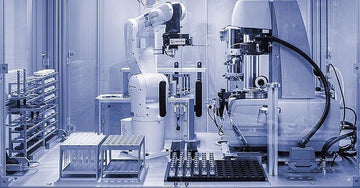Lab Me At-Home Blood Testing VS At-Lab Vein Drawn Blood
The use of dried blood analysis was already described in 1913 for the estimation of blood glucose concentration.
The most prominent use of dried blood samples for clinical laboratory purposes dates back to the early sixties when Dr Robert Guthrie developed an assay to detect phenylketonuria.
Guthrie’s application for collecting blood on filter paper led to the population screening of newborns to detect inherited metabolic diseases.
Today, at-home blood testing blood collection onto a solid matrix has become an important screening tool for several common medical conditions.

Lab, My core partner labs, have been actively involved in developing and adapting traditional laboratory tests to be performed using dried capillary blood samples on a solid matrix. at-home blood testing.
The collection of capillary blood for laboratory testing has significant advantages over traditional venipuncture; it is simple to perform, requires minimal training, and does not involve the risks associated with using and disposing of needles and syringes.

A dried blood sample also represents a low infectious hazard as many viral pathogens lose infectivity owing to the disruption of their envelope upon drying.
Risks associated with shipping are also minimized as these samples cannot leak or be broken while in transit, and there is no special requirement for transportation.
This new technology, depicted in figure 1, simultaneously removes the cellular components in blood while the sample is applied to the solid matrix, allowing the use of serum portion for analysis.
Therefore, this new approach is a true alternative collection method similar to an SST tube, where red cells are separated from the serum without requiring a centrifuge.
This enables the laboratory to perform serum-based tests without red cell contamination, and the results are equivalent to those obtained using conventional methods, as shown in figure 2.

Laboratories' at-home blood test kits are required to perform analytic validation of clinically relevant performance specifications of each method used. All laboratories must establish accuracy, precision, analytical sensitivity, specificity, interferences, and reportable range.
The validation of a new analytical method is primarily concerned with identifying the sources of potential errors and quantifying the potential errors in the method. Lab Me's accredited laboratories have followed all the necessary steps to document the performance specifications of every test currently available to health awareness participants and physician clients.
The certifying agency routinely evaluates these documents during on-site inspections, and compliance is necessary to maintain accreditation. We have also made clients a validation summary for each laboratory test in the form of technical bulletins for quick review by clients and other users of Lab Me's services.
Learn More About Our Labs
We are picky. We only work with the highest-rated, CAP & CLIA accredited labs.
Click Here


